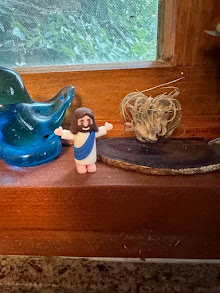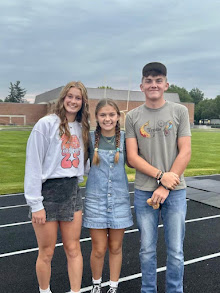You think I exaggerate? Not a chance.....the back seat of the Torino carried fragile green things in pots; maybe our dishes got the honor of the trunk, but I don't remember that. The back of the truck was half full of milk crates (our other main furniture group serving as book cases and lamp tables) of plants and boxes of plants. Clearly my husband was deeply in love; I would never get away with anything like that now! Or, if I did, it would not be without comment.
The plants didn't settle into life at the farm as well as they had in the duplex we rented in Columbia. The old windows had narrow sills. Before too long, I'd picked up a shelf made of spools and plywood at a garage sale and outfitted it with two little fluorescent plant lights.
I planted a garden at the little house that first year but the combination of a dry summer and new sod proved detrimental to my first attempts. I was much better indoors, clipping African violet leaves and rhizomatous begonia leaves and rooting them under my growlights. The easy stuff got a haircut and clogged dozens of florist vases on every window sill. What we lacked in decor, we made up for in humidity and organic matter. I didn't have a job job but liked to be busy so the plant population grew and grew. The winter before Lee was born was so cold, we moved the television to the kitchen; we moved all the plants to a table of plywood and two sawhorses in our previous living room and hung blanket in the doorway separating the two rooms. The plants survived and so did we but the whole set up was pretty primitive even for young folks just starting out.
That spring, Blake bought me our first greenhouse, a little 8x8 affair that cost about five times more per square foot than our eminently more plant friendly commercial structures now.
Way back then, winter meant the arrival of seed catalogs. All year long I read my copies of 'Flower and Garden' and 'Horticulture'. I would buy the special gardening issues of Better Homes at the HyVee. During January, the magazines all contained tearout postcards offering "FREE" glossy seed catalogs from points all over the country. Over time, the Park Seed catalog became my favorite because of its wide selection of odd perennials and part time houseplants and I ordered lots of ten and twenty seed packets of seeds, many arriving in little gold foil sealed envelopes labeled with the cautionary advice, 'seeds are small!' I'd fill little two inch white pots with about two tablespoons of potting mix, cover them with plastic wrap, and wait for life and roots.
Thompson and Morgan became my other main source for seeds. They carried an even larger assortment of perennials, many not available in the garden centers I visited. Eventually, I read enough that I found out why....all those beautiful annual sweet peas, or the pages of campanulas, or the two foot long spikes of delphiniums were staples of British gardens and not likely to survive beyond sprouthood in rural Atchison county. Nonetheless, I proved I could grow seeds, even if gardening itself was a tougher cookie to crack.
Finally we moved our little but growing family to town to the house on 4th street with the giant basement...with sump pumps in both corners. Too wet for occupation, but the washer and dryer lived there; our wood stove moved there; and it was the perfect place for the houseplants. For $10 I could put up a four foot long 40 shop light and I did....lots of times! The tables were old lumber from the farm set on rinsed out Lasso cans. I grew tropical begonias by the dozens, ordered from Logees as a 2 inch pot plant or as single leaves from assorted hobbyists. I grew African violets, also rooted from leaves purchased for 50 cents from a little old lady who lived in the country near my folks. I wasn't a serious hobbyist though at the time I did stick name labels in the flower pots I grew. And in the spring, I ordered coleus seeds and columbine seeds, begonia seeds and petunia seeds, marigolds and four o'clocks and assorted daisies. I don't remember what worked and what didn't, but I do know peeking under the plastic wrap on a daily basis and watching for those first tiny leaves was entertainment of the first order. I look at pictures now of those first flats of seedlings, the first flats of annuals and the first baskets we grew and I blanch because they were not pretty. Its a little embarrassing to have evidence on record of these pretty substandard plants. But we didn't start out of a burning desire to sell something, anything, to somebody. To broaden our agriculture base and diversify certainly made sense and to have a business we grew ourselves is a source of quiet pride. But the bottom line is that I was going to keep growing flowers in any available space for love if not money. And Blake was a smart enough man to see the writing on the wall and kick all those plants out of his living room and into a greenhouse.















No comments:
Post a Comment